Last updated on March 28, 2024
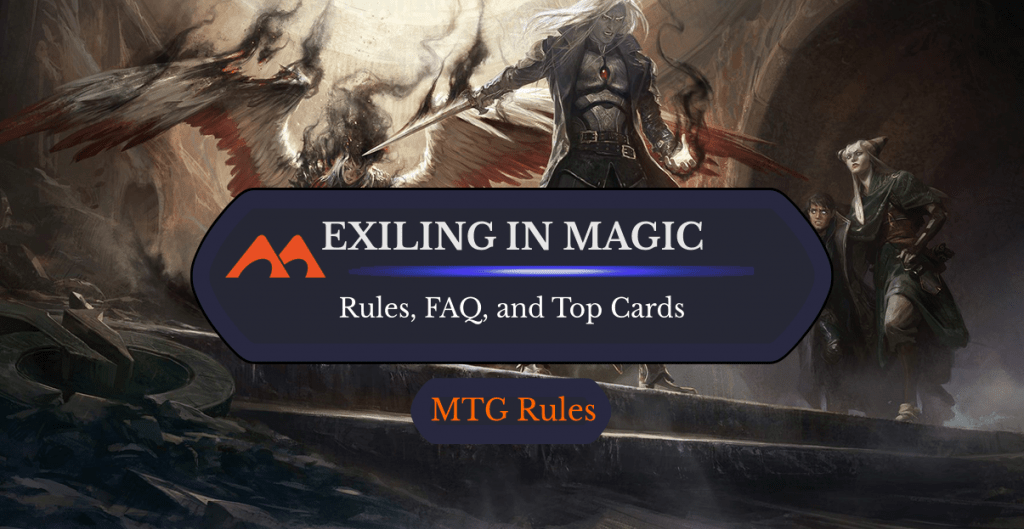
Anguished Unmaking | Illustration by Wesley Burt
Did you know that “removed from the game” effects have been in MTG since the original Alpha set? What about the huge rework to change it to what we know now as exile?
The exile zone is a strange place that doesn’t really exist in other card games. What makes Magic’s so special, and why is it so prevalent?
Let’s dive in.
How Does Exile Work?
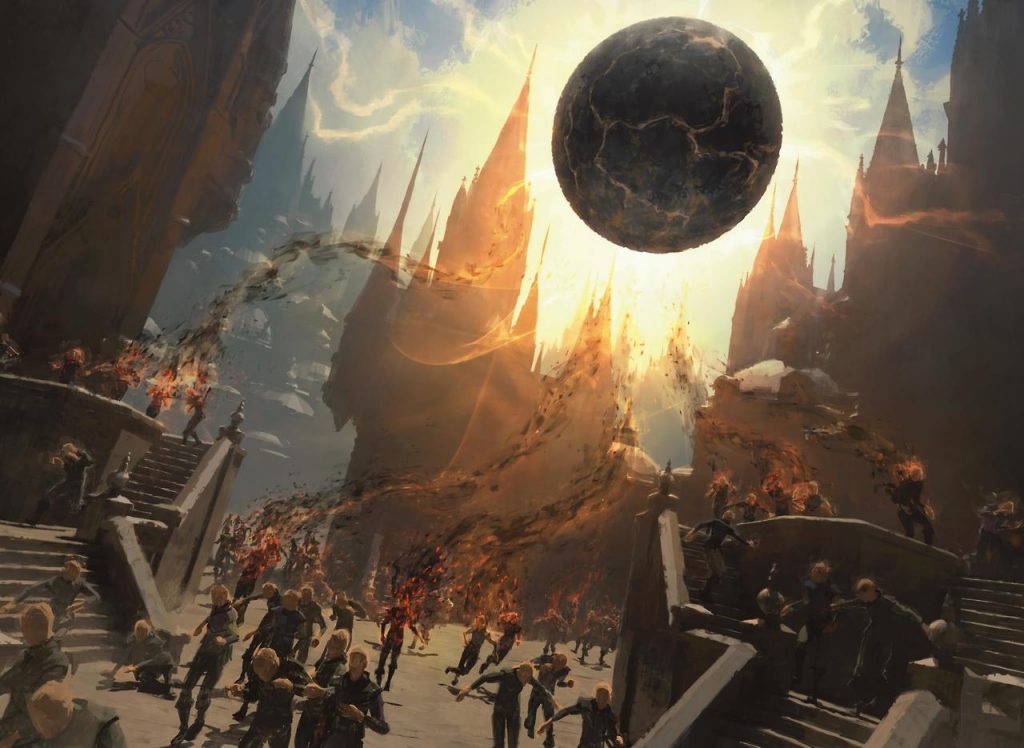
Merciless Eviction | Illustration by Richard Wright
Exile is a zone in the game that you normally can’t interact with. Cards sent to exile aren’t usually able to come back until the end of the game unless they’re returned as part of an ability’s resolution. These cards are placed in the special “exile” zone face up unless a card says otherwise.
The History of Exile in MTG
Exile wasn’t always called that. It was known as “removed from the game” until the massive rules changes that came with Magic 2010. But we’ve seen cards that can remove things from the game since the very first set, Alpha.
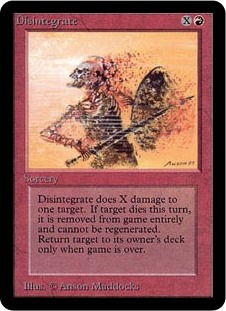
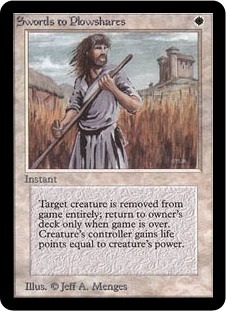
While we don’t really have spoiler articles from way back when, two notable cards in Alpha can exile creatures: Disintegrate and Swords to Plowshares. It was templated as “removed from the game” for years until the aforementioned rules change.
The Magic 2010 rules changes brought an official name for the long-lasting zone with them. Now referred to as “exile,” it finally had an official name and became an evergreen keyword. It’s been in every set (in some form) since the start of the game and won’t be going anywhere anytime soon.
Why Does Exile Exist in Magic?
Exile has often been a place to temporarily hold cards for other abilities like suspend, adventure, and flicker effects. It’s also used as a way to have a graveyard-like zone with little to no interaction. Then there’s the additional costs for cards and abilities, but more importantly as graveyard hate.
Does Exile Count as Dying? Do Cards Go to the Graveyard?

Creatures don’t go to the graveyard when they’re exiled. This means they don’t trigger any “when X dies” or graveyard triggers. This is also true for damage spells that have a potential exile clause, like Magma Spray.
Does Exile Count as Leaving the Battlefield?
Cards that are exiled still leave the battlefield. This is why you see flicker effects exiling permanents, because they leave and return as a new object.
Can You Look at Exiled Cards?
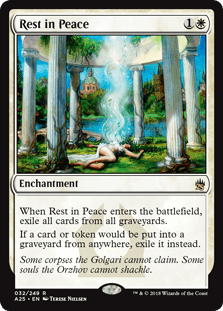
Exiled cards are exiled face-up in most cases unless the effect says otherwise. If you’re exiling cards with Rest in Peace, all of these cards will be visible, open info.
But there are plenty of abilities that say the cards sent to exile are sent there face-down. This is because the ability gives you the option to use that card later. These are important aspects of hidden info in abilities like foretell.
What’s the Difference Between Exile and Destroy?
Destroy effects always put that permanent in a graveyard while exiled cards always go to exile. They’re two different zones with different purposes and they don’t overlap.
How Do Paper Players Deal With Exiled Cards?
I generally set the cards aside, face up, farther out than my graveyard, or tilted 90 degrees underneath my graveyard. In the case of O-Ring-type cards, which would return the card to play if removed, I put the exiled card underneath the permanent.
How Can You Play Cards from Exile?
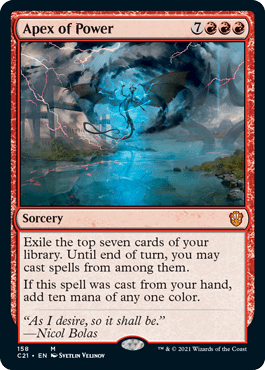
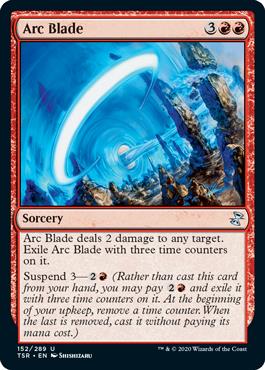
A card can sometimes be cast from exile depending on how it was put there. Effects like Apex of Power allow you to cast cards that the original card exiled while suspend cards like Arc Blade are cast when they leave exile.
The simple rule is, “if the card doesn’t say you can, then you can’t.”
How Can You Return Cards from Exile?
This is another rule that follows “if the card doesn’t say you can, then you can’t.” But there are a handful of cards that explicitly return other cards from exile. Mark Rosewater has said that he’s pretty against cards like these so I wouldn’t expect to see many more in future sets.
Riftsweeper
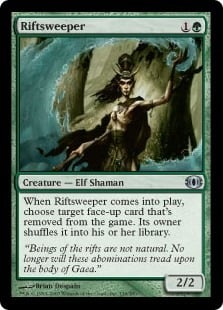
Riftsweeper is a creature that can shuffle one face-up exiled card back into its owner’s library.
Pull from Eternity
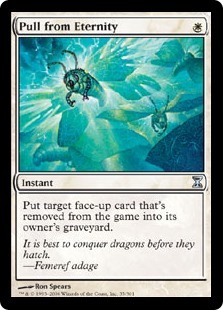
Pull from Eternity can put a card into its owner’s graveyard.
Runic Repetition
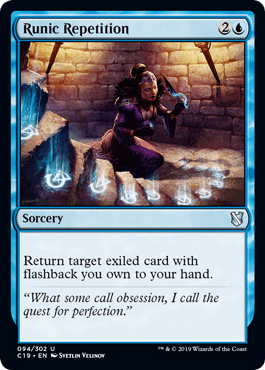
Runic Repetition is only able to return an exiled card with flashback, but it goes to your hand.
Void Maw
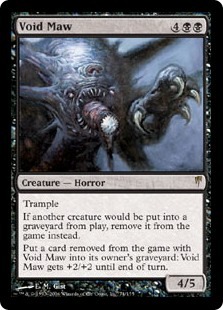
Void Maw is a bizarre creature that can put cards that were exiled by it back into its owner’s graveyard.
Eldrazi Processors
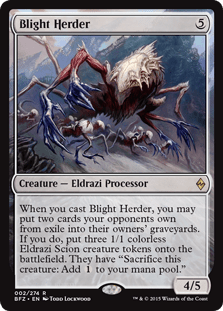
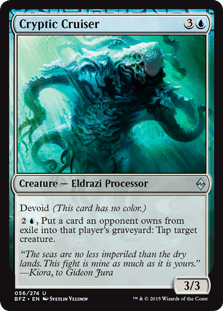
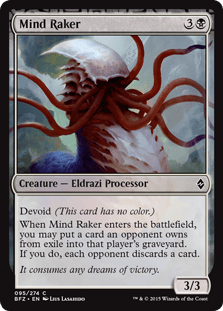
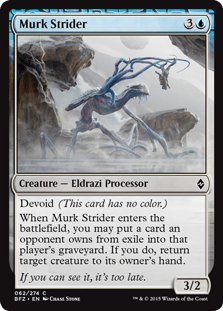
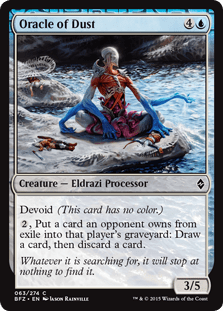
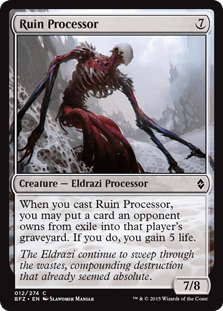
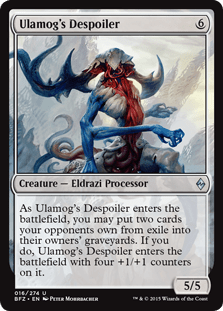
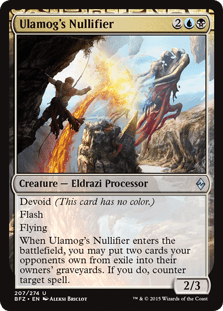

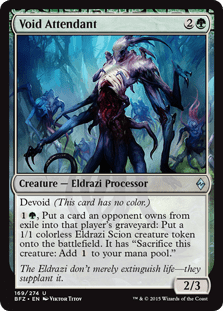
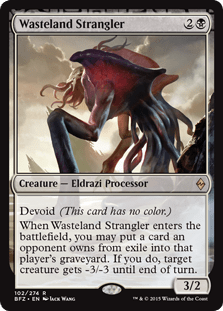
Eldrazi Processors were a creature subtype with a unique mechanic in Battle for Zendikar. All of these creatures could return an exiled card an opponent controlled to their graveyard and an effect would trigger.
Where Do Cards Go After Played From Exile?
Cards go to the graveyard after being played unless a card says otherwise.
What Happens If a Commander is Exiled?
Back in the old days, you could have gotten your commander exiled for good if you weren’t careful. But the current Commander rules state:
If a commander is in a graveyard or in exile and that card was put into that zone since the last time state-based actions were checked, its owner may put it into the command zone…
This means that you still have the option to return your commander to the command zone regardless of how it gets there. Theoretically, you can just let it go to exile but that’s not wise in most cases.
Is the Command Zone the Same as Exile?
The command zone is a “special zone” used for certain effects and game modes, but it’s not exile. This zone doesn’t have anything to do with exile.
What Does It Mean to “Blink” a Permanent?
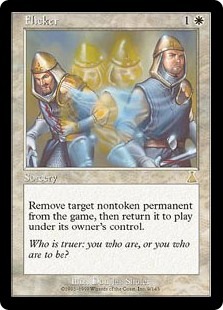
When a card is “blinked” or “flickered” it’s temporarily exiled before returning to the battlefield. It originated with Flicker, inspired by phasing.
When a creature that’s blinked is removed from the game it returns either on the ability’s resolution or at the beginning of the next end step. This happens automatically and the card is then considered to be a new permanent.
Can You Exile Something That Has Been Sacrificed?
If the permanent is sacrificed as a cost, you cannot exile it. Otherwise, it's up to the spell or abilities on the stack.
What Happens To Tokens That Are Exiled?
Tokens that are exiled leave the battlefield, and then cease to exist and will not return to the battlefield.
How Does Exile Work with Indestructible?

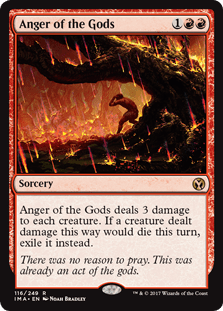
Indestructible cards can’t be destroyed, but they can be exiled. Nothing about being exiled affects the card being sent to the graveyard, except if there’s a damage clause in order for it to be exiled. Cards like Disintegrate and Anger of the Gods don’t send anything to exile because the targets can’t be dealt lethal damage.
Can You Regenerate an Exiled Creature?
Nope. Once a card enters exile, it doesn’t have any abilities or properties unless the effect that put it there says so. Cards in exile also can’t be destroyed or put into combat, which means regenerate effects would do nothing.
What Mechanics Use the Exile Zone Naturally?
There are actually a lot of ways the exile zone gets used in regular gameplay across all formats. Take a look:
- Aftermath, flashback, and jump-start each exile the cast cards upon resolution of the ability.
- Cipher exiles a card and lets you attach it to a creature, casting the spell if the creature deals combat damage to a player.
- Embalm, eternalize, and encore all exile the card from the graveyard to get a token copy of the original creature.
- Escape and delve have exiling cards from your graveyard as an additional cost, or to help pay for the card.
- Foretell lets you exile the card from your hand to cast it for an alternate cost later.
- Ingest exiles the top card from damaged players.
- Meld actually exiles the card while resolving the meld ability for the final creature.
- Rebound exiles the spell upon resolution, letting you recast it during your next upkeep.
- Scavenge exiles a card from your graveyard to put +1/+1 counters on a creature like a twisted version of undying.
- Suspend puts a spell into the exile zone until a specific number of time counters are removed. When there are no counters left you can cast the spell without paying its mana cost.
- Unearth exiles the creature once the turn has ended or if it would leave play.
What Are Some Ways to Exile All Creatures?
There are a handful of cards that let you exile entire boards, just like a classic board wipe.
What Are Some Cards to Exile Graveyards?
This is the most common graveyard hate in Magic. Why let your opponent have access to a graveyard when you can just exile it all?
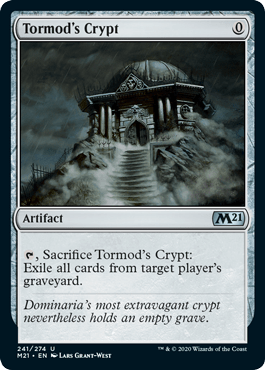

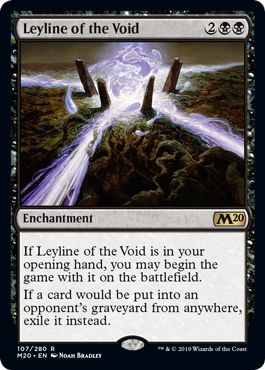
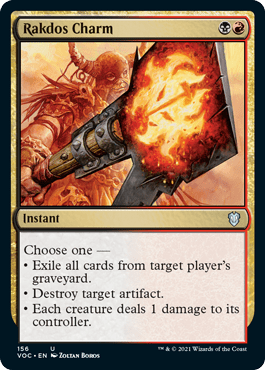
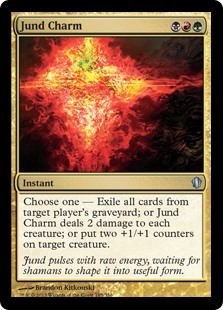
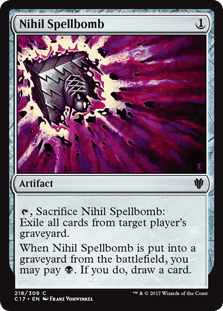
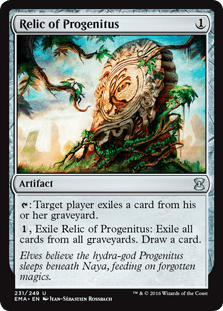
- Tormod's Crypt
- Rest in Peace
- Leyline of the Void
- Rakdos Charm
- Jund Charm
- Nihil Spellbomb
- Relic of Progenitus
What Exiles Cards from a Library?
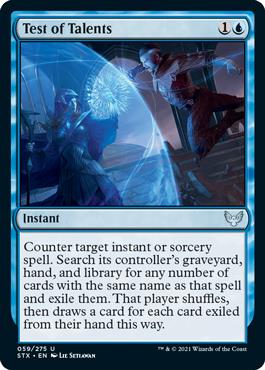
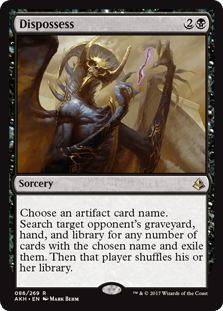
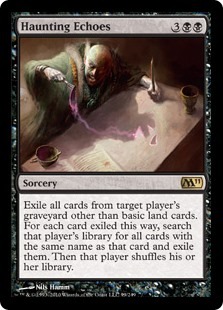
There are a few ways to exile cards from libraries. Some counterspells and discard spells, like Test of Talents, Dispossess, and Haunting Echoes let you target specific cards as part of the resolution.
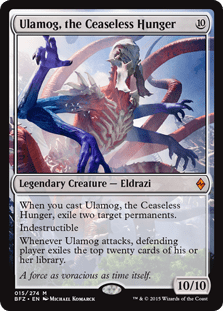
Aside from targeted cards, there aren’t a lot of ways to exile cards from a library en masse. Ulamog, the Ceaseless Hunger can exile 20 cards at once and there are a handful of red cards that let you exile cards from the top of your library and cast them for a limited window.
What Cards Exile Spells on the Stack?
This is probably one of the most unique ways to exile something; by exiling it while it’s still on the stack.

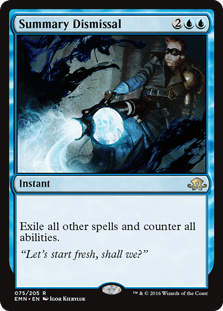
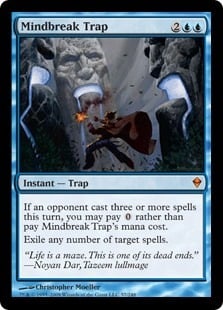
You can potentially do this via Time Stop and similar effects, or just exile everything with a blanket effect by casting Summary Dismissal or Mindbreak Trap.
Does Exile Count as “Outside the Game”?
Funnily enough, no.
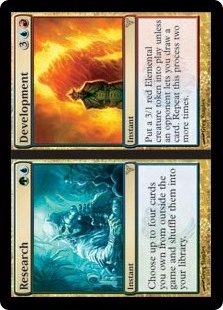
Before the rules update for Magic 2010, you could theoretically use cards like Research // Development to pull cards from outside the game which included the old “removed from the game” rule. But this rule no longer applies now that exile is a special zone in the game.
Does Retrace Exile?
Unlike flashback, retrace doesn’t exile the card once it’s cast. It’s just recast as if it was cast from your hand.
What is “Capping”? Or Surgical Extraction-ing Something?
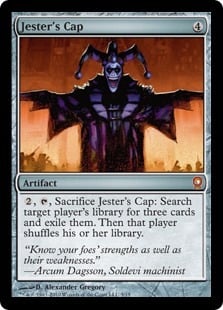
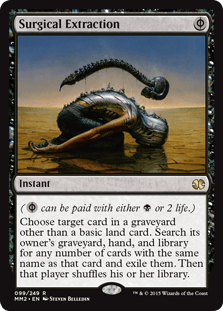
There are only a handful of ways to remove specific cards from your opponent’s deck, most of which are known by the slang term “capping” or “surgical-ing.” These come from Jester's Cap and Surgical Extraction, though there are a few other cards that are similar.
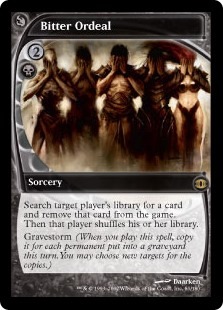
These cards are most frequently used to target specific combo pieces in competitive decks. I like to trigger infinite gravestorm triggers and exile entire libraries with Bitter Ordeal.
Can You Exile An Emblem?
No, you cannot exile emblems. Generally, you exile permanents.
Best Exile Cards
Here are some of the best cards that exile stuff. These are scattered across different formats but you can see how dynamic the mechanic is.
Brutal Cathar / Moonrage Brute
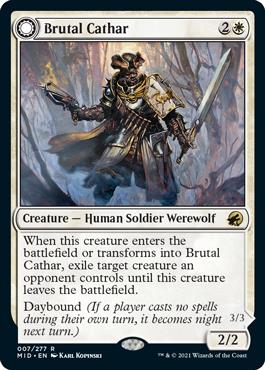
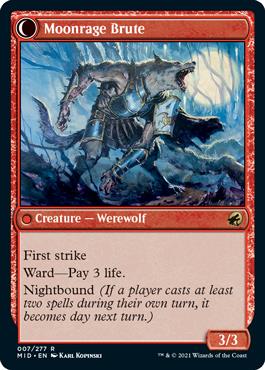
Brutal Cathar is one of many kinds of creatures that exile another creature when it enters the battlefield, but not permanently.
Sunfall
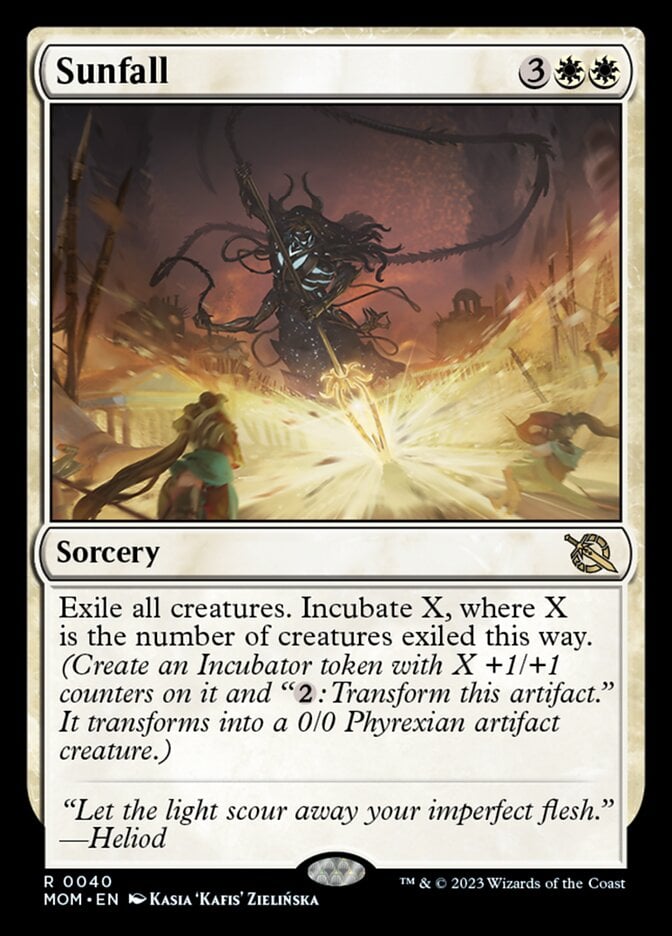
Sunfall has been a mainstay in Standard, as a strong wrath and an automatic leg up on the table with a big incubator token.
Go Blank
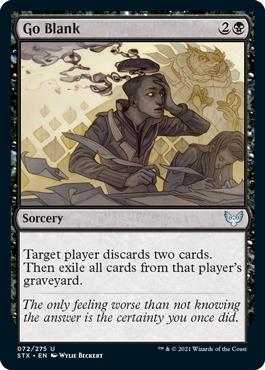
Go Blank sees a lot of sideboard play since it gets rid of two cards from your opponent and also shuts off graveyard plans.
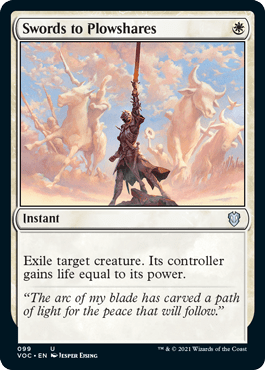
Swords to Plowshares is premier removal in Commander, Legacy, and Vintage, while Modern has to make do with Path to Exile.
Anguished Unmaking
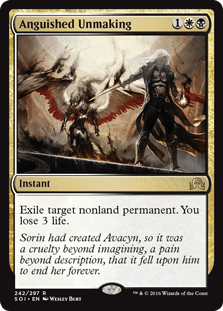
Anguished Unmaking is more premier removal for Commander.
Merciless Eviction + Farewell
Merciless Eviction is one of the few mass-exile board wipes, and it hits a lot. Then Farewell does it better by letting you choose more than one mode. Frankly, both can still be devastating.
Are There Cards That Benefit From Being In Exile?
Here are a few cards that either benefit from being in exile, go to exile to be safe from removal, or pull cards from exile like another draw pile.
Decklist: Norin the Wary in EDH

Norin the Wary | Illustration by Heather Hudson
Commander (1)
Planeswalkers (2)
Jaya, Venerated Firemage
Tibalt, Rakish Instigator
Creatures (19)
Birgi, God of Storytelling
Burnished Hart
Grinning Ignus
Hamletback Goliath
Hanweir Garrison
Iron Myr
Kari Zev, Skyship Raider
Lightning Berserker
Loyal Apprentice
Mogg War Marshal
Myr Battlesphere
Purphoros, God of the Forge
Reinforced Ronin
Rose Room Treasurer
Seasoned Pyromancer
Solemn Simulacrum
Terror of the Peaks
Torbran, Thane of Red Fell
Witty Roastmaster
Instants (7)
Abrade
Chef's Kiss
Lightning Bolt
Mages' Contest
Pyroblast
Seething Song
Thrill of Possibility
Sorceries (6)
Dragon Fodder
Faithless Looting
Firecat Blitz
Glimpse of Tomorrow
Mizzium Mortars
Warp World
Enchantments (18)
Confusion in the Ranks
Daring Piracy
Dictate of the Twin Gods
Fiery Emancipation
Furnace of Rath
Goblin Assault
Impact Tremors
Mechanized Warfare
Mirror March
Outpost Siege
Pandemonium
Possibility Storm
Pyrohemia
Spellshock
Stensia Uprising
Sulfuric Vortex
Tectonic Reformation
Warstorm Surge
Artifacts (11)
Arcane Signet
Caged Sun
Conjurer's Closet
Genesis Chamber
Honor-Worn Shaku
Lightning Greaves
Panharmonicon
Skullclamp
Sol Ring
Tome of Legends
Wayfarer's Bauble
Lands (36)
Den of the Bugbear
Dwarven Mine
Forgotten Cave
Kher Keep
Mountain x30
Valakut, the Molten Pinnacle
War Room
The flavor text on Norin the Wary is a running joke in Star Wars movies in that every movie has it. This commander is always going to exile. Before Norin has the chance to land an attack, your opponent casts a removal spell, and off to exile land it goes. To really get things going with permanents like Impact Tremors, Warstorm Surge, and Terror of the Peaks that capitalize on Norin coming back into play. There is a lot more to discuss in our Norin the Wary Commander Deck Guide which features this very deck.
Ending in Exile
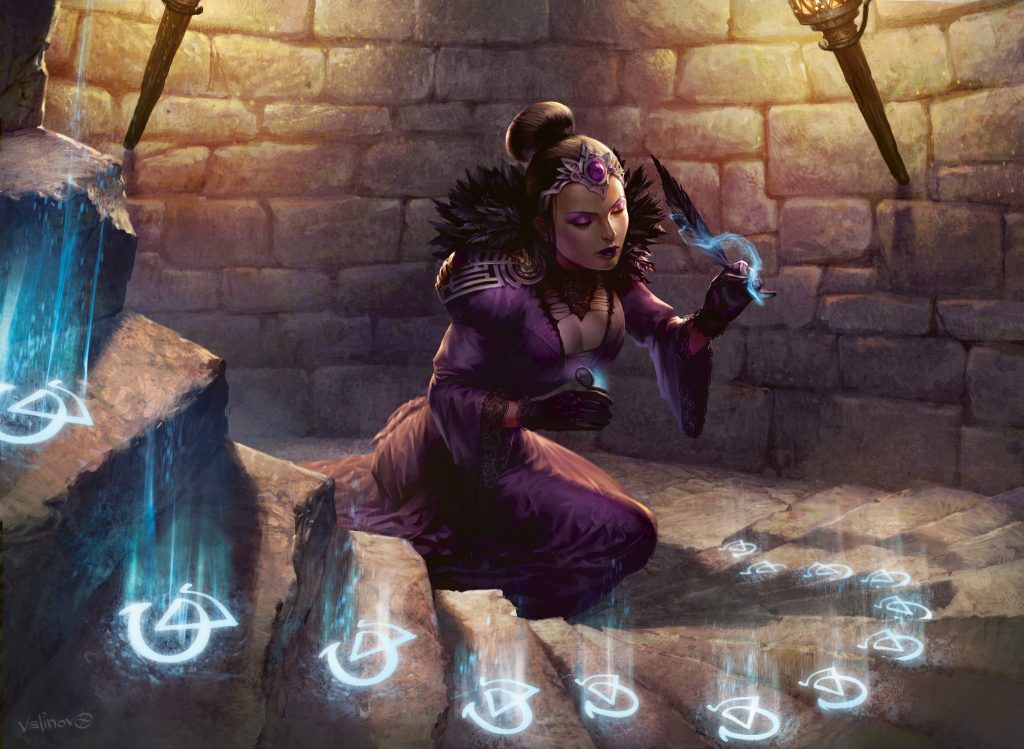
Runic Repetition | Illustration by Svetlin Velinov
Exile has been in the game since its inception, though not always under the same name. It helped better establish the mechanic with the advent of changes that came with Magic 2010. Since then we’ve seen plenty of interesting design space within exile, some good and some bad.
What do you think about it? Are you happy with how exile works, or is it still confusing to you? Let us know in the comments or talk to us over on the Draftsim Discord.
That’s it for me! Wash your hands and stay safe out there!
Follow Draftsim for awesome articles and set updates: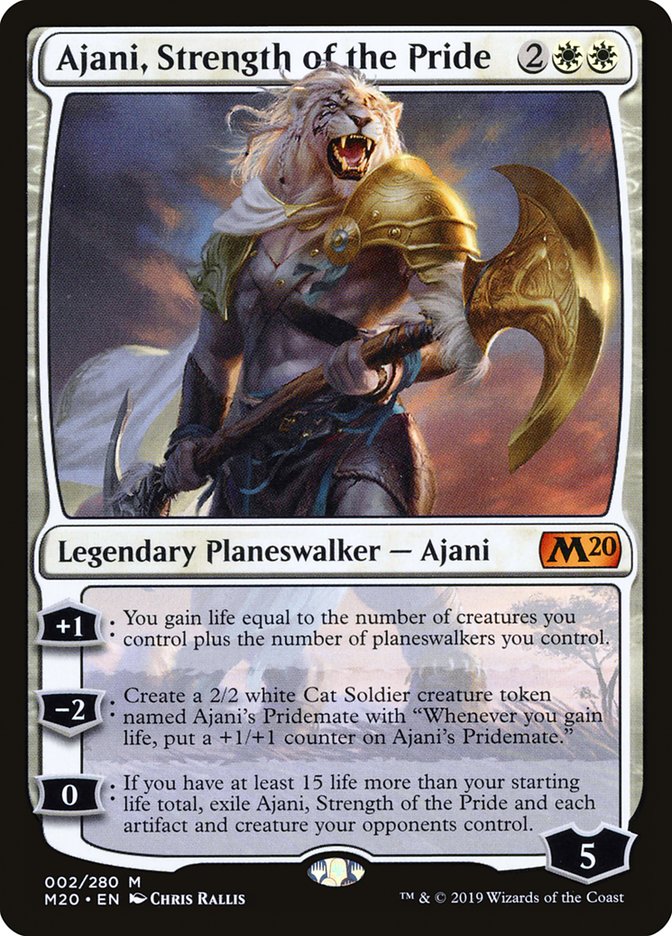
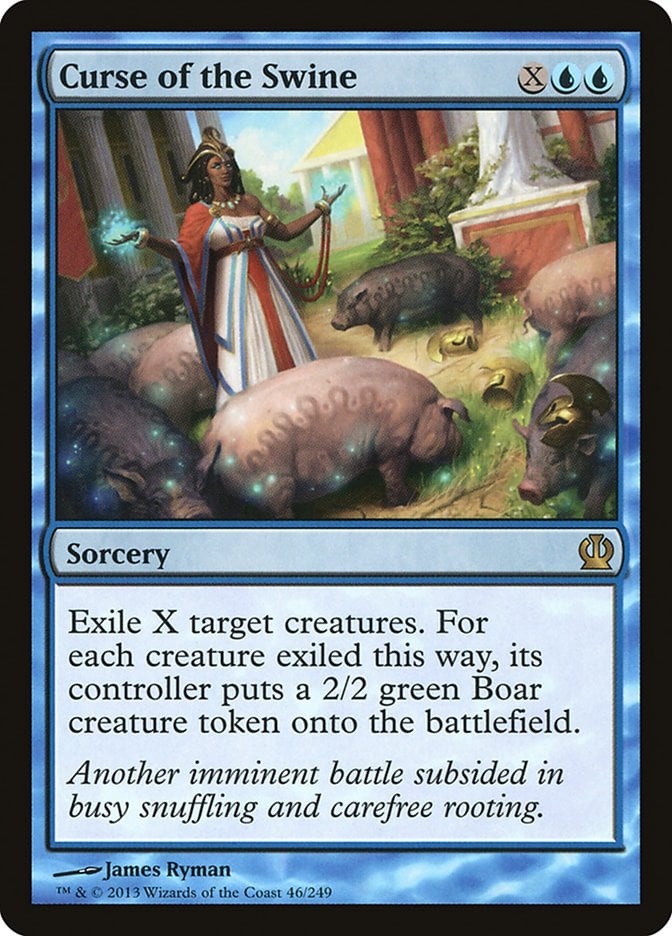
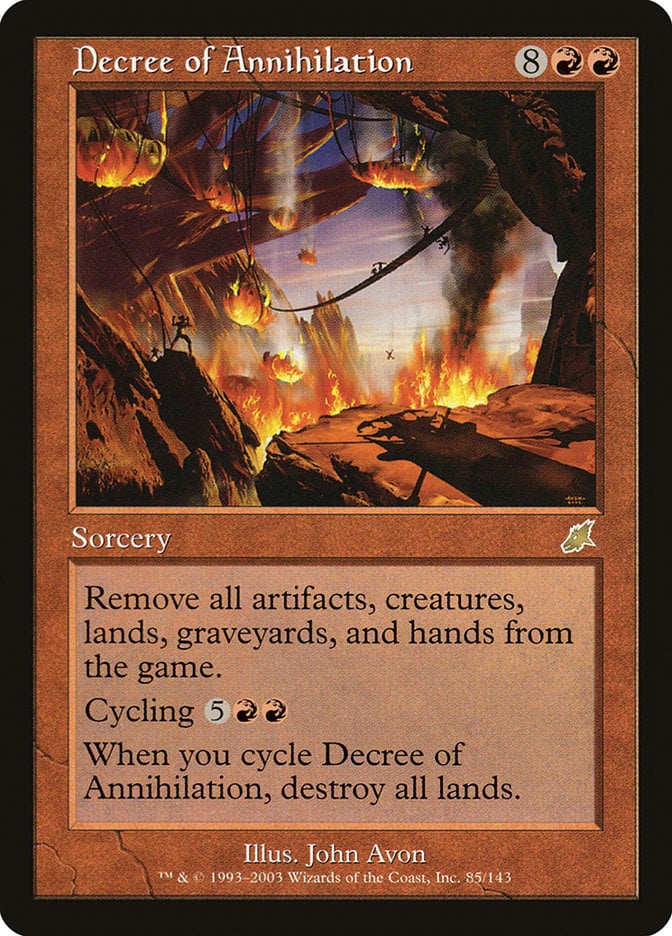
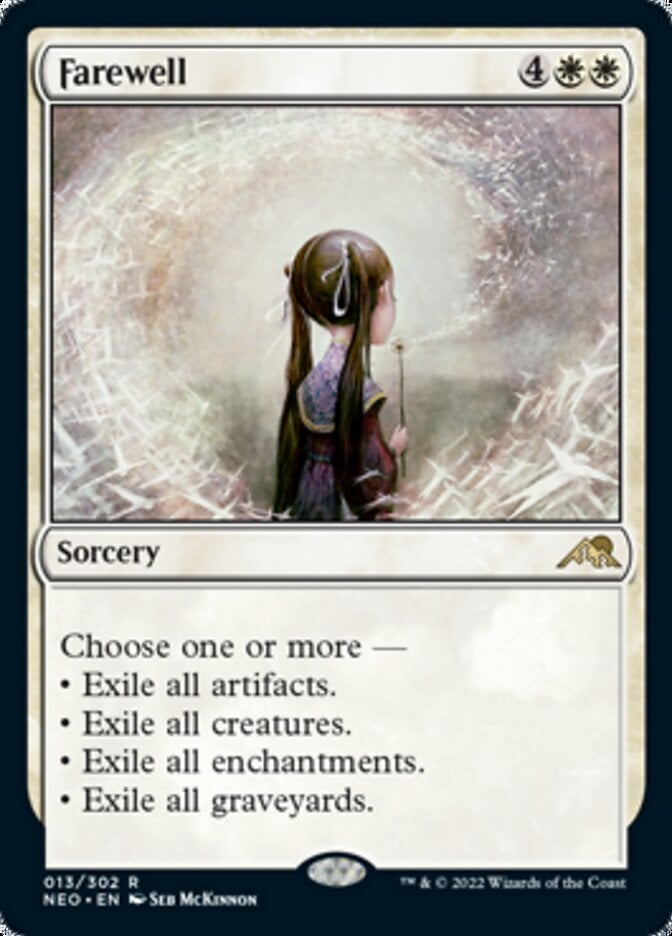
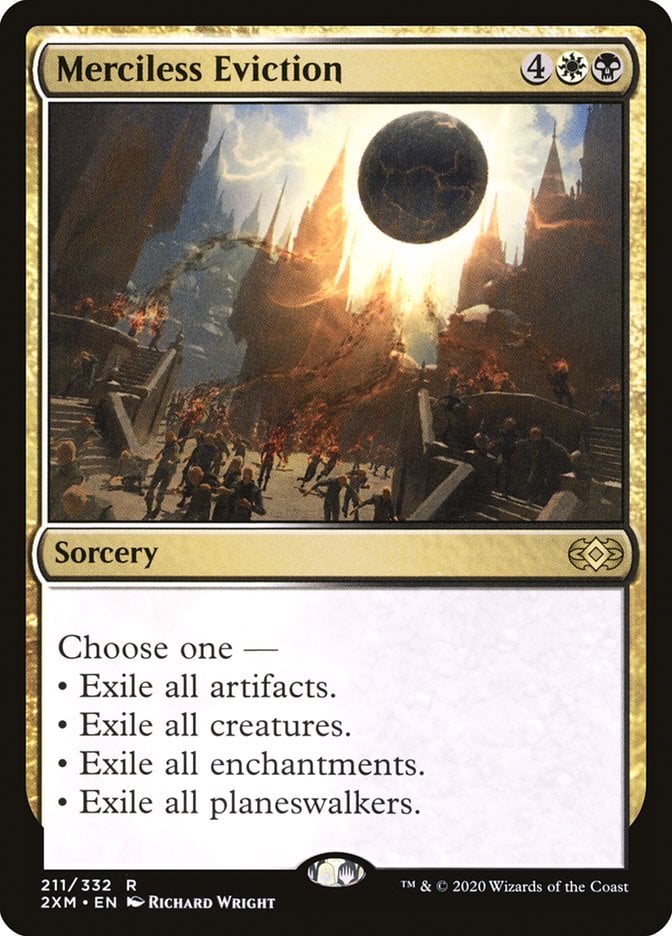
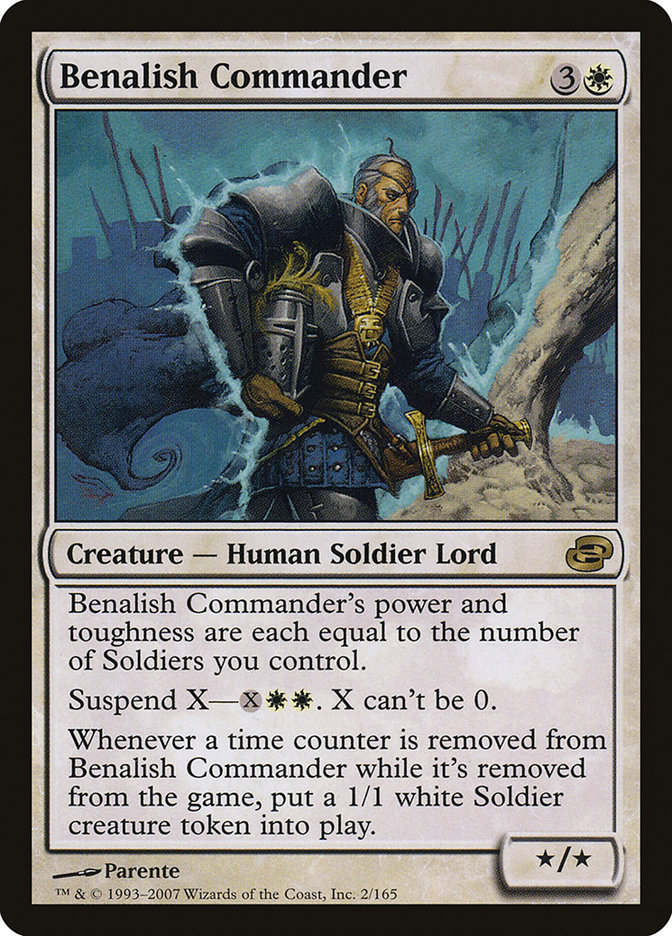
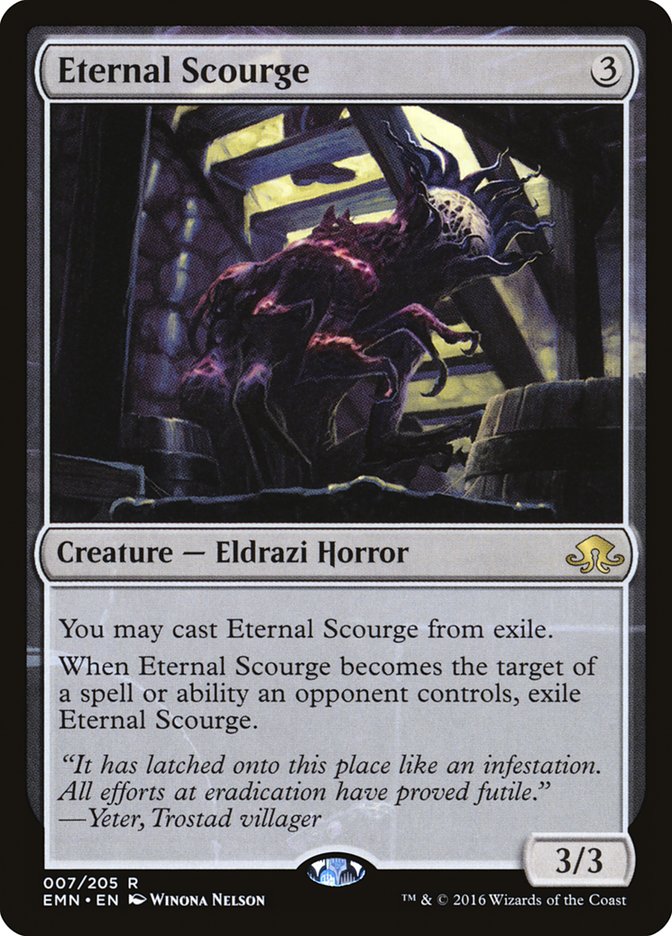
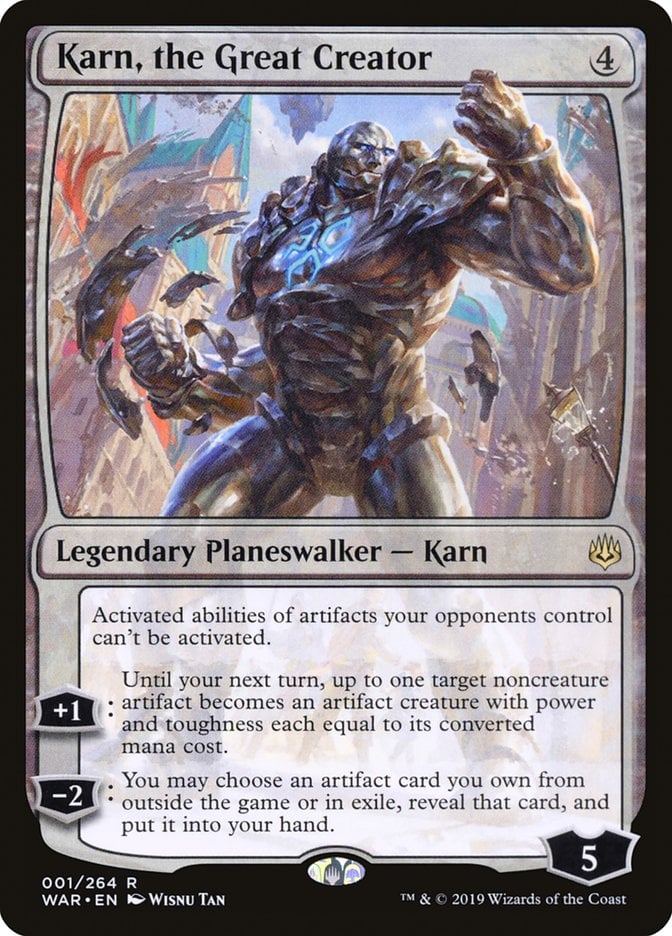
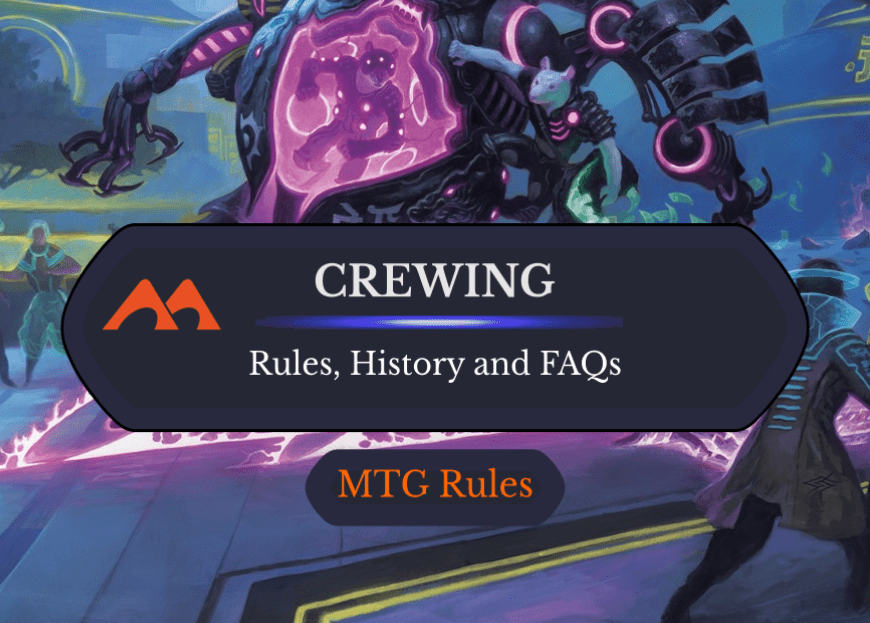
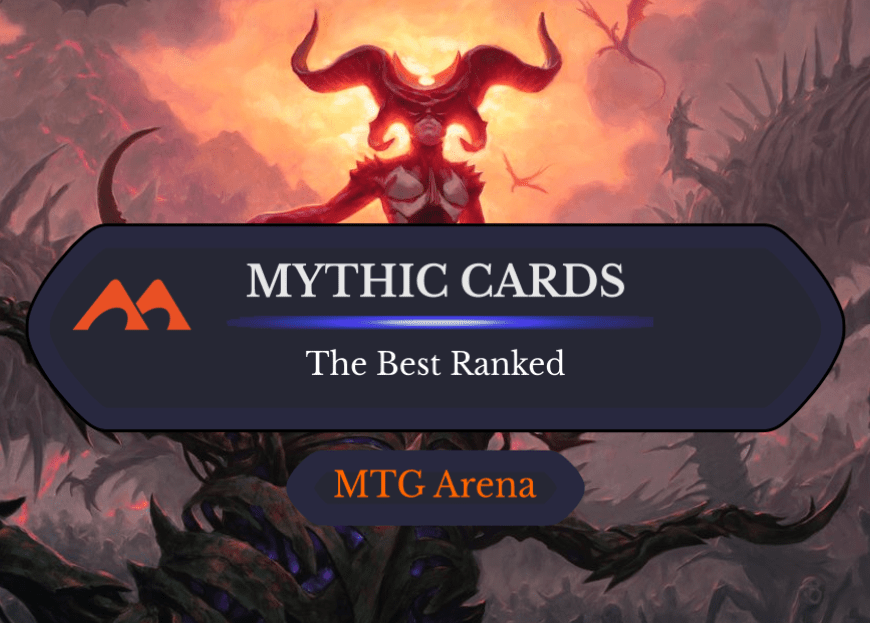
2 Comments
The answer to this question may be obvious to some, but I’m struggling with it, hence the asking: If I exile cards with one [[Unlicensed Hearse]] will a second one be pumped by them?
Nope, when a card refers to itself by name, what it really means is “this (individual) card.”
Add Comment